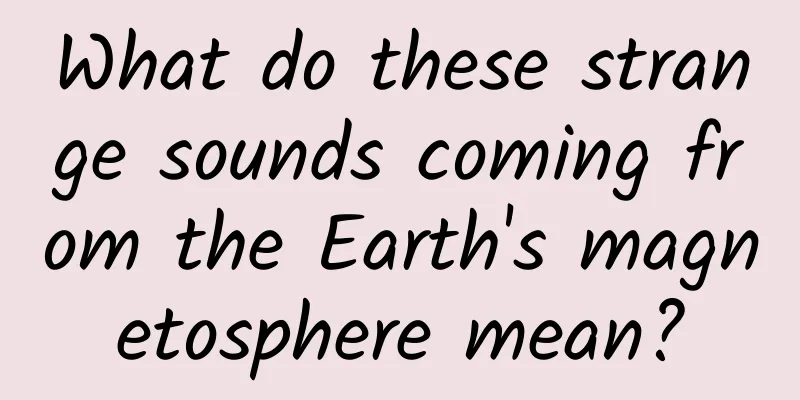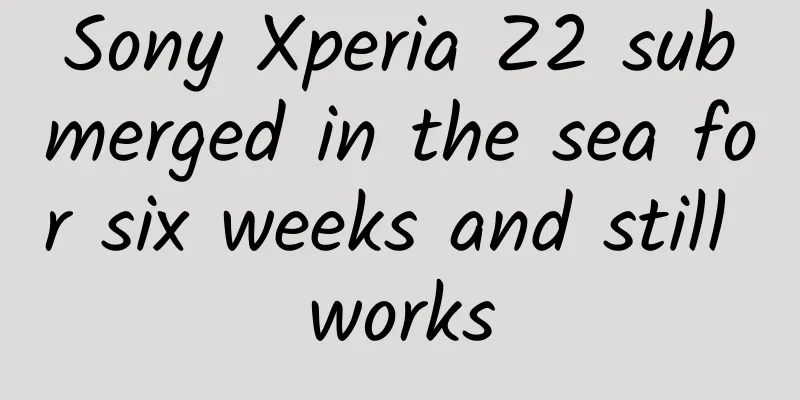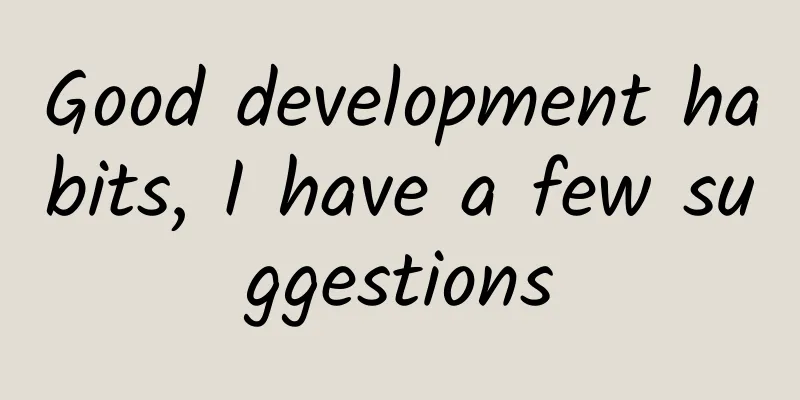What do these strange sounds coming from the Earth's magnetosphere mean?

|
The Earth's magnetic field environment is filled with a "symphony" that we cannot hear. Ultra-low frequency radio waves constitute an intoxicating opera, depicting the dramatic and complex relationship between the Earth and the Sun. Now, a new NASA-funded citizen science project called Heliophysics Audified: Resonances in Plasmas (HARP) is turning these otherwise inaudible fluctuations into a variety of sounds, such as whistles, crunches, and whoos. The project has already discovered some amazing phenomena in preliminary tests, and citizen scientists can join in the journey of exploring space with sound to decipher the meaning behind these cosmic vibrations that help us understand the song of the sun and the earth. NASA Enthusiasts Listen to the sounds of space and help learn more about the Sun-Earth relationship with NASA's new HARP citizen science project. Video credit: NASA/Beth Anthony Subtitles: Wow @NASA Enthusiasts “What excites me most is that citizen scientists can participate in heliophysics research and make new discoveries through sound analysis,” said Michael Hartinger, a solar physicist at the Space Science Institute in Colorado, and principal investigator of HARP. “We need their help to understand the complex patterns in the space environment near Earth.” Earth's magnetosphere is a bubble of magnetic field that surrounds and protects our planet from most of the charged particles from the Sun. However, when solar particles hit the magnetosphere, they cause the magnetic field lines and plasma around Earth to vibrate like the strings of a harp, producing ultra-low frequency waves. In the animation above, yellow solar wind particles flow from the Sun on the upper left of the image to the Earth on the right. Earth is surrounded by dozens of magnetic field lines and a red arc-shaped schematic strip, which keeps solar particles out of the way. Inside the arc is a thin, wavy blue line. Image credit: Martin Archer, Imperial College London/Emmanuel Massonson, UCLA/NASA The space between the Earth and the Sun is not a complete vacuum, but is filled with charged particles called plasma. These plasmas come from the Sun, ejected from the Sun in a steady stream, the solar wind, and are occasionally thrown out with great force during solar eruptions. When these solar plasmas hit the Earth, they cause the magnetic field lines and plasma around the Earth to vibrate like a harp, generating ultra-low frequency waves. In 2007, NASA launched five satellites as part of the THEMIS mission. Scattered throughout the magnetosphere, the THEMIS satellites studied how plasma and energy moving through Earth’s environment trigger different types of auroras (northern and southern lights). In 2010, two satellites were reassigned to study the lunar environment, while the other three continued to explore Earth’s magnetosphere and auroras. In this image, five identical THEMIS satellites are in orbit around Earth. One satellite is in front of the Earth in the image, while the remaining four are behind. Five blue loops around Earth indicate their orbits, while the auroras are seen around Earth’s north pole. Image credit: NASA/Goddard Space Flight Center’s Conceptual Image Lab In 2007, NASA launched five satellites as part of the THEMIS (Time History of Events and Macroscale Interactions during Substorms) mission to fly through Earth's magnetic field harp - its magnetosphere. Since then, the THEMIS satellites have been collecting a wealth of information about the fluctuations in plasma in Earth's magnetosphere. The THEMIS mission explored how the movement of plasma and energy in Earth's environment triggers the different types of auroras (Northern and Southern Lights). In 2010, two satellites were reassigned to study the lunar environment, but the other three satellites continue to explore Earth's magnetosphere and auroras. The three satellites are called THEMIS-A, THEMIS-D, and THEMIS-E1. The main goal of the THEMIS mission is to determine the physical processes that cause auroral substorms. Auroral substorms are a phenomenon in the Earth's magnetosphere that causes auroral activity in high latitudes to suddenly become brighter and more active. Auroral substorms are caused by the interaction of the solar wind with the Earth's magnetic field. When the load particle flow of the solar wind interacts with the Earth's magnetic field, it will produce energy accumulation and release in the tail of the magnetosphere, resulting in the occurrence of auroral substorms. The THEMIS satellite and ground-based instruments can observe these substorms simultaneously, thereby revealing their origin and evolution. "Themis can sample the entire magnetosphere, and it's been there for a long time, so it has collected a lot of data," Hartinger said. These waves are important for understanding the transfer and conversion of energy between the sun and the earth, however, the frequencies of the waves measured by the THEMIS satellite are too low for human ears to hear. So the HARP team raised their frequencies and converted them into sound waves. Using an interactive tool developed by the team, you can listen to these waves and pick out interesting sound features that you hear. "The process of identifying new features through deep listening feels a bit like a treasure hunt, and I'm excited that people around the world can experience this through the HARP project," said Robert Alexander of Auralab Technologies, a HARP team member. According to the team, humans are better at picking out interesting wave patterns with their ears than with their eyes, and are even better than computers at identifying the complex patterns that emerge during extreme solar events. "Human hearing is an incredibly powerful skill," said Martin Archer, a member of the HARP team from Imperial College London. "We are basically trained from birth to recognize different sound patterns and pick out different sources of sound. We are naturally able to do some pretty amazing analysis, even surpassing some of the most advanced computer algorithms." An all-sky camera captured green auroras dancing in the Canadian night sky on March 24, 2023. Scientists compared the features in the aurora with observations from NASA's THEMIS mission and found that the swirling and trembling patterns in the aurora are directly linked to plasma waves near Earth. Image source: University of Calgary, Canada The HARP project was inspired by an earlier sonification project led by Archer called MUSICS, which stands for “Magnetospheric Undulations Sonified Incorporating Citizen Scientists.” When Archer invited high school students in London to listen to sonification data (measurements converted into sound) from a National Oceanic and Atmospheric Association (NOAA) satellite, they discovered a new plasma wave pattern associated with solar storms. "High school students in London were able to pick out a complex but repeatable pattern in the sounds that an automated algorithm had missed," said Hartinger. "HARP will take this work to the next level, using a much larger dataset from NASA's THEMIS mission and a much larger online audience." The HARP team says there's one benefit to having a broad and diverse group listening to the sounds. "Everyone hears the world differently," explains Emmanuel Masongsong of UCLA, a member of the HARP team and a member of NASA's THEMIS mission. "Each participant will have a unique response to vibrations in space. What one person overlooks may catch the attention of another. We hope people will discover things we never considered, or that computer algorithms couldn't detect." On the HARP project's website, you can listen to space sounds from different satellites, at different times, and at different locations, and you can categorize, tag, and comment on them. You can also select the sounds you want to hear through an interactive map, or view the sounds of different dates through a calendar. You can even create your own sound collection and share your findings with other citizen scientists. You can help identify special sound patterns, such as resonances or noises, and find out how they are related to solar activity or changes in the Earth's environment. You can also help discover some rare or unknown sound phenomena and come up with your own explanation or hypothesis. Initial surveys with HARP have already begun to reveal unexpected features, such as a pattern the project team calls a "reverse harp," in which the frequency changes in the opposite way to what scientists expect. "It's really exciting that HARP might find things we don't expect," Archer said. HARP can also provide insights into phenomena encountered by other NASA citizen scientists, such as the sounds heard by amateur radio operators participating in the HamSCI project or the wavy auroras examined through the Aurorasaurus project. "Data sonification provides humanity with an opportunity to enjoy the music of the universe," Alexander said. "The sounds we hear are simply unexpected, and for me, it's the next best thing to wearing a space suit and walking in space." |
Recommend
Breaking news! The Wenchuan mudslide has caused 4 deaths. How to deal with the mudslide?
According to Sichuan Emergency News today, the We...
The truth behind the globally controversial "room temperature superconductivity" incident turns out to be like this!
Produced by: Science Popularization China Author:...
New iOS/iPadOS 15 development tools prioritize 5G over Wi-Fi
August 12 news Apple today released a new develop...
Unboxing the new Inphic i5 quad-core phone: There is such a unique and beautiful little bun in the world
The packaging box was ordinary, but when I saw th...
Apple is accused of reducing iPhone 7 parts orders and lowering prices in the supply chain
August 24th marks the fifth anniversary of the da...
World Economic Forum: What other areas of cooperation are there between China and the Gulf region besides oil?
China and the Gulf Cooperation Council countries ...
Xiaomi's Lei Jun plays with chip giants in the palm of his hand?
Yesterday, a piece of news about Xiaomi and Media...
Xiaomi enters the US market not because it doesn’t want to, but because it can’t
Xiaomi senior vice president Wang Xiang said in a...
Remote control saves the world "Dragon Slayer Legend" TV version review
Screen: Sound Effects: operate: Plot: Experience:...
After listening to the "gambler's" warning, I learned how to edit photos and make the camera turn.
From Grand Theft Auto, The Witcher 3 to Red Dead ...
1V1 short video sales expert running cash camp
Short video sales expert 1V1 running companion ca...
The cold winter of mobile phone manufacturers: Samsung loses its large-screen advantage and Lenovo struggles to transform
After four or five years of rapid development, ma...
Tutorials can make or break a game: A brief analysis of the design of a tutorial for new players
Have you ever had this experience? When you are ex...
Ecological beauty adds green to the world's largest clean energy corridor
At the turn of spring and summer, the world's...
How to plan a press conference for tens of thousands of people without money, people or channels?
Today we will take a look at how a press conferen...









